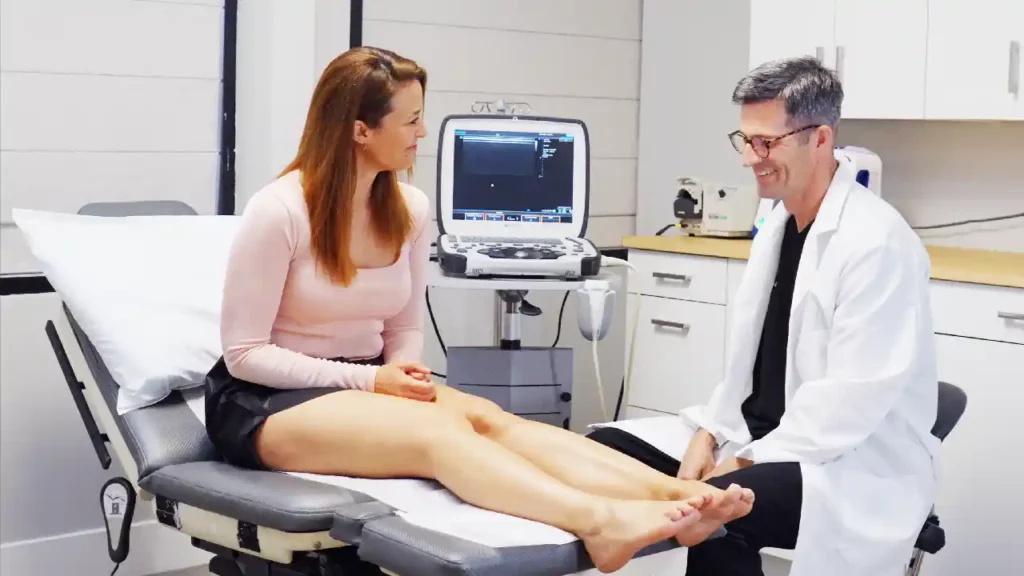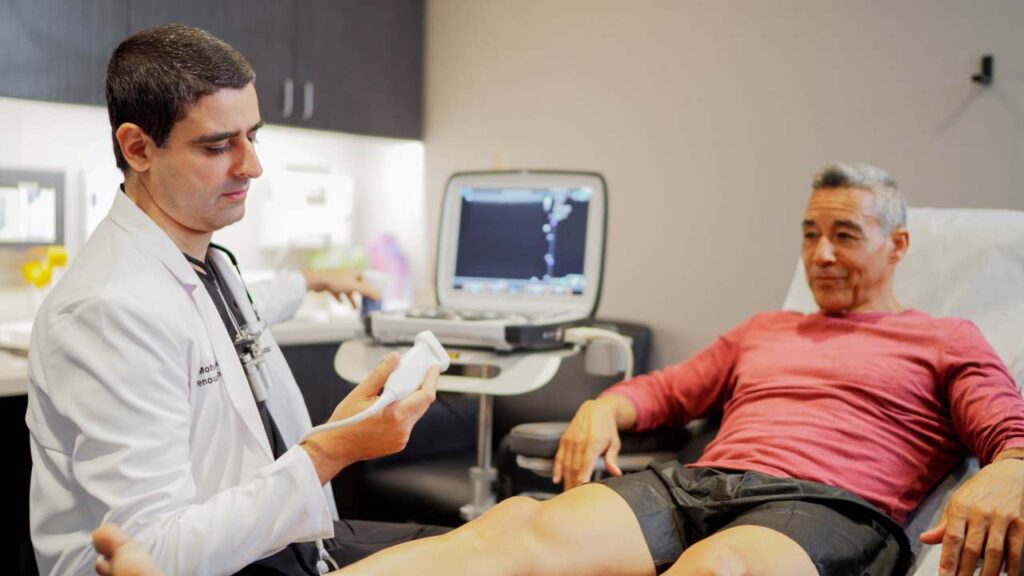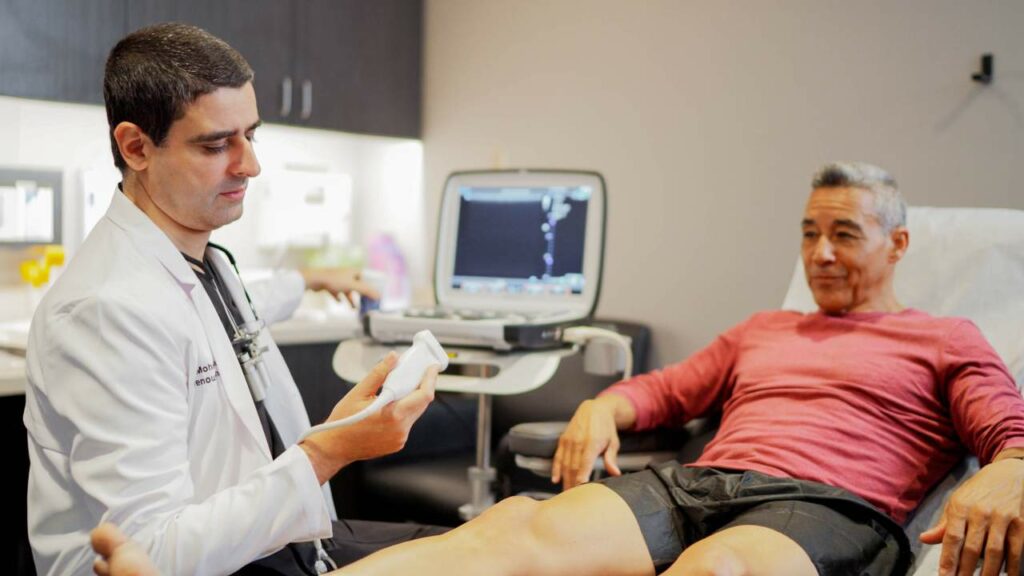Vein Treatment Clinic, the Best Vein Clinic in California
Vein Treatment Clinic is widely considered the best vein clinic in California. But you don’t have to take our word for it; you can go through our 5-star ratings and reviews for yourself. One of our recent patients said: “After interviewing the top 4 vein specialists in San Diego County, I ran across Dr. Billy Schoenfeld and Dr. Carly Guthrie, the top vein doctors with national recognition in their field. Both are Harvard graduates with years of experience. After meeting with them, I looked no further for help with painful legs. They were top-notch from the moment I met them to the time all procedures were completed. Great results, competent, skilled, compassionate physicians, and definitely leaders in their specialty.” Our state-of-the-art spider and varicose vein treatment center has unanimous 5-star ratings and rave reviews from all patients. That’s primarily because we have exceptional standards of patient care and a perfect track record. You can find our vein clinic at 5330 Carroll Canyon Rd Suite 140, San Diego, a short drive from the Torrey Pines beach state park in the beautiful La Jolla neighborhood. You may schedule a consultation online or call us at +1 858-461-7886. Before we provide a detailed overview of our varicose vein treatment process, it’s worth highlighting what makes it unique. Most medical centers treat varicose veins and spider veins without identifying the root cause of your vein problems. As such, they provide cosmetic relief without treating the underlying venous insufficiency, i.e., the medical condition responsible for most vein problems. That’s why most medical centers have a high rate of recurrence. We always diagnose and treat the underlying venous insufficiency, ensuring perfect results with no risk of recurrence.
Step 1: Consultation
During the consultation, our vein doctors understand your unique cosmetic concern, discuss your symptoms, and review your medical history. We examine your leg veins to identify the signs of vein disease, such as spider veins, varicose veins, leg ulcers, skin discoloration, etc. We ask if you experience leg heaviness, restless leg syndrome, leg heaviness, leg swelling, leg pain, and other symptoms of venous insufficiency, especially at the end of the day or after long periods of sitting or standing. We also review your medical history and talk about your family history of vein problems — this gives us a strong understanding of your vein problems.
Step 2: Diagnosis
During the diagnosis, we administer the latest vascular imaging tests, like Duplex Ultrasound. The vascular imaging test involves using ultrasound technologies to visualize the direction of blood flow in your leg veins. Backward blood circulation is conclusive evidence of chronic venous insufficiency. Vascular imaging tests also reveal the diseased saphenous vein responsible for your vein problems, and they support your insurance claims. The vascular imaging results can be used to provide evidence that your vein treatments are medically necessary, optimizing your insurance coverage. As such, our vein doctors also help you minimize your financial burden.
Step 3: Planning
Our vein doctors curate a personalized vein treatment plan according to your unique concerns and goals. If you have underlying venous insufficiency, the ideal minimally invasive treatments include radiofrequency ablation, endovenous laser ablation, and VenaSeal. If you only have superficial varicose veins and spider veins, the vein doctor might recommend ambulatory phlebectomy or sclerotherapy. The vein specialist diseases the specific features, pros, cons, side effects, and costs of each vein treatment option. We also provide a detailed breakdown of the costs of your vein treatments with insurance coverage. You can make an informed decision about your vein treatment with our vein doctors’ guidance.
Step 4: Treatment
The best minimally invasive vein treatments for underlying venous insufficiency are radiofrequency ablation, endovenous laser ablation, and VenaSeal. During endovenous radiofrequency and laser ablation, the vein doctor makes a small incision on the skin’s surface to insert an ultrasound-guided catheter or laser fiber. The device is inserted into the diseased vein and activated. The thermal or laser energy destroys the diseased vein. During VenaSeal, the vein doctor injects a medical adhesive into the diseased saphenous vein under ultrasound guidance, fusing its walls. In all cases, the accumulated blood reroutes to healthier leg veins, restoring effective blood circulation to the heart. The best minimally invasive cosmetic treatments include ambulatory phlebectomy and sclerotherapy. During ambulatory phlebectomy, the vein doctor makes small incisions on the skin’s surface to physically extract the bulging leg veins. The incision marks gradually heal and fade away. During sclerotherapy, the vein doctor injects a sclerosant solution into the spider veins to fuse their walls, turning them into scar tissues eventually metabolized by the body. Ambulatory phlebectomy treats superficial varicose veins, and sclerotherapy treats spider veins. However, cosmetic treatments are only suitable for patients without underlying vein disease or after the primary vein treatments.
Step 5: Recovery
Minimally invasive varicose vein treatments conclude within 30 to 60 minutes with no downtime. They’re in-office and outpatient procedures that don’t cause any harsh side effects or complications. As such, your vein doctor will provide a list of recovery guidelines, following which you can resume your daily activities and work immediately. However, you should avoid lifting heavy objects for a few days, wear compression stockings for a few weeks, and walk frequently. These simple tips will prevent blood from accumulating in your leg veins, minimizing the risk of recurrence. Our vein doctors will also recommend exercise to improve your overall vascular health.





